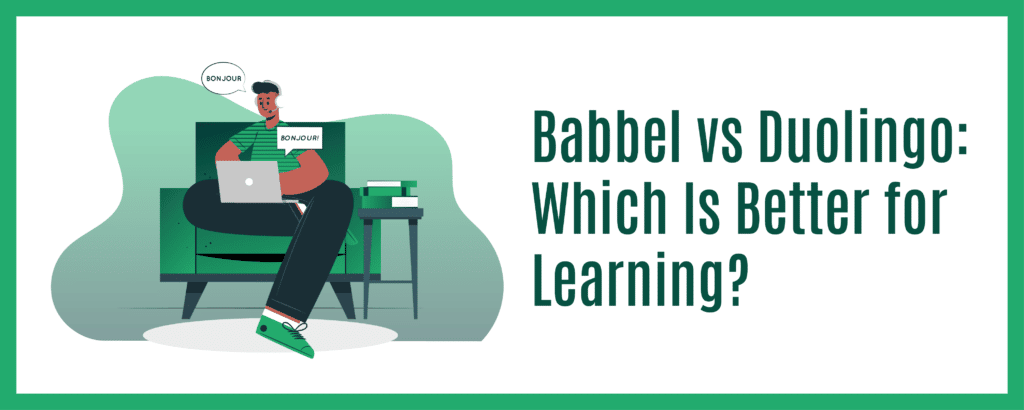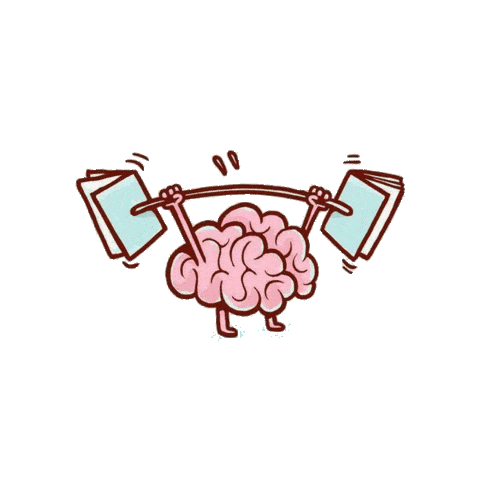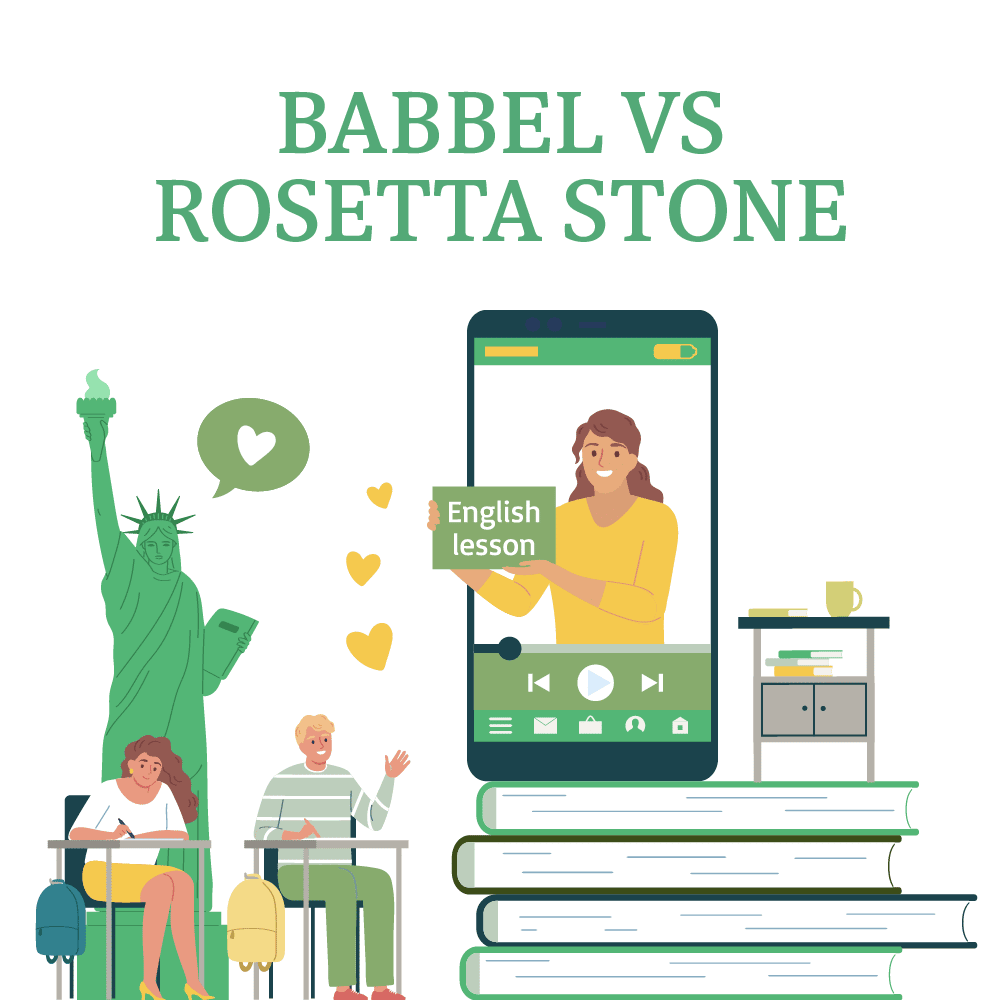There are tons of benefits to learning a second language. Better memory, increased connections, and more career opportunities are just a few.
So, why is it that so few Americans (only 1 out of 10) speak a second language, especially when compared to the rest of the world?
Most Americans aren’t taught to take learning a foreign language very seriously.
If you’re committed to breaking this trend and trying to learn a new language, you might be wondering whether Babbel or Duolingo is the better option.
Both apps are popular language learning choices, but they have some key differences.
To help you make the best decision for your needs, we’ve put together a comparison of Babbel vs Duolingo.
But which one is the best?
Keep reading to learn more about the features and benefits of each app!
Babbel Overview
Babbel is a language learning app that offers online language courses. You get access to 14 different languages so that you can tailor your vocabulary lessons to your liking. It’s one of the most popular apps for learning multiple languages, with over 10 million users worldwide.
One of the things that sets Babbel apart from other language-learning apps is its focus on conversation. The app teaches you practical phrases and vocabulary that you can use in real-life situations.
Babbel also offers a wide range of features to help you learn effectively. For example, the app uses speech recognition technology to help you improve your pronunciation. You can also slow down the audio playback to understand native speakers more easily. This feature is sure to improve your speaking skills.
Another unique feature of Babbel is its “Review Manager.” This feature lets you review words and phrases you’ve already learned to ensure that they’re firmly imprinted in your memory.
Let’s put a pin in Babbel for a moment and switch our focus to Duolingo. This will allow you to see some of the contrasts between the two apps more easily.
Duolingo Overview
Duolingo is a popular app for language learners. It offers its Duolingo courses in 39 languages. So if you want to learn more than one language, Duolingo’s language course is an excellent fit. What’s more, its popularity continues to rise, with over 500 million users worldwide.
One of the things that makes the Duolingo language app unique is its use of gamification. It’s mascot a green owl named Duo, is the king of fun. The app uses game-like elements to make learning more engaging. For example, you can earn points and unlock new levels as you progress through the lessons.
It even keeps track of your progress through streaks! Miss a day? Duo will remind you!
Duolingo also offers a recent feature called Duolingo Stories. This is a series of short stories that are written in the target language you’re learning. The stories start out simple and get more difficult as you progress—a great way to practice your reading and listening skills in a real-world context.
Now that you have a general understanding of how both apps operate, it’s time to take a more in-depth look at each one.
What’s the Difference Between Babbel and Duolingo?
You might be wondering which app is better suited for learning a new language: Babbel or Duolingo.
The answer to this question depends on your specific needs and preferences. If you’re looking for an app with a wide range of languages, Duolingo might be the better option. However, if you’re looking for an app that offers more comprehensive lessons, Babbel could be a better choice.
It’s also worth noting that Babbel is a paid app, while Duolingo is both free to use and has a paid version. So, if you’re on a budget or want to “try before you buy,” Duolingo might be the better option.
Babbel vs Duolingo Features
Both Babbel and Duolingo offer a range of features to help you learn a new language.
Babbel features:
- 14 different languages to choose from
- Comprehensive lessons with grammar explanations
- Native-speaker practice opportunities through Babbel live
- Podcasts, 2-minute stories, and culture bites
- Progress tracking and review exercises
Duolingo features:
- 39 different languages to choose from
- Mini-games, stories, and puzzles to help you learn
- The ability to practice speaking with native speakers
- You can test out of easy lessons
- Progress tracking and review exercises
Babbel vs Duolingo: Benefits and Drawbacks
Both Babbel and Duolingo offer several benefits for language learners.
Benefits of Babbel
- Comprehensive lessons that cover all aspects of the language
- The ability to learn at your own pace
- Detailed progress tracking of language proficiency
- The option to practice speaking with native speakers
Drawbacks of Babbel
- No free version is available
- The platform can seem a little ‘boring’ when compared to other platforms
Benefits of Duolingo
- A wide range of languages to choose from
- They present material in a fun, engaging way
- The ability to practice speaking with native speakers
- Progress tracking and review exercises
Drawbacks of Duolingo
- The free version includes ads that some users find annoying or inappropriate
- Content isn’t as conversational as the content offered by Babbel
Duolingo vs Babbel: How Much Do They Cost?
Comparing prices is important. For many users, it’s what makes the difference between trying an app and passing it up. So let’s start with Babbel and see what it offers in terms of pricing plans.
How Much Does Babbel Cost?
Babbel offers a variety of pricing options, depending on how you want to learn and how much you want to spend. If you prefer to pay-as-you-go, there’s a monthly plan that costs $14 for each month of use. For a longer commitment, you can choose the 3-month plan for $10 a month.
Next, there’s a 6-month plan that comes out to about $8.50 a month. Lastly—and with the most value—there is a 12-month plan for $7 a month.
This is likely to appeal to people who want to commit to the language-learning platform for the long haul, as it provides a significant discount compared to the monthly plan.
How Much Does Duolingo Cost?
Duolingo also offers a paid subscription plan called Duolingo Plus. This plan is $84 a year, but you have the option to pay monthly, which comes out to $7 a month. As a paid user, it’s important to make the distinction that you won’t have to deal with those pesky ads that are present in the free version of Duolingo—an assured benefit for users.
What’s more, you also get the added benefit of unlimited hearts—which come in handy when you’re struggling with a particular lesson and need some extra help—as well as unlimited attempts to test out of lessons.
If you’re someone who likes to learn at their own pace and review their mistakes, Duolingo Plus also offers personalized lessons to users. Overall, the paid subscription gives you access to more features that may be beneficial in your language-learning journey.
How Long Does It Take to Learn a Language on Duolingo?
Duolingo is designed to provide lessons for 15 minutes a day. However, the platform is flexible and can be used for as little or as much time as you want. But at a rate of 15 minutes a day, you can expect to learn a new language in about four years, give or take.
Tips for Learning a New Language with Babbel vs Duolingo
Regardless of which language learning app you choose, some general tips will help you learn more effectively.
First, it’s important to set realistic goals for yourself. Trying to learn a new language in a short amount of time is generally not going to be possible, and you’ll likely just get frustrated. Instead, set a goal of maybe one or two new words or phrases per day, and gradually increase that as you get more comfortable.
Next, it’s important to actually use the language you’re trying to learn. Don’t just rely on the app—try to find real-life opportunities to practice, whether that’s with a native speaker or just talking to yourself in the mirror. The more you use the language, the better you’ll become at it.
Finally, don’t get discouraged if you make mistakes during the learning process. Everyone makes mistakes when learning a new language, and that’s perfectly normal. Just keep practicing—you’ll eventually get the hang of it to where your language skills vastly improve, and you’re able to communicate more effectively.
You might also be interested to find out the winner in our comparison of Babbel vs Rosetta Stone.
Babbel vs Duolingo FAQs
Duolingo is designed to provide lessons for 15 minutes a day. However, the platform is flexible and can be used for as little or as much time as you want. But at a rate of 15 minutes a day, you can expect to learn a new language in about four years, give or take.
Babbel is a very good application for learning language skills that are important for fluency. You can use Babbel to become fluent in any language so long as you put in the time and effort to do so.
Babbel may be harder for beginners, but this is really subjective and depends on the learner. Comparative to Duolingo, this tool encourages students to write rather than read and has a much more conversationally oriented approach.




